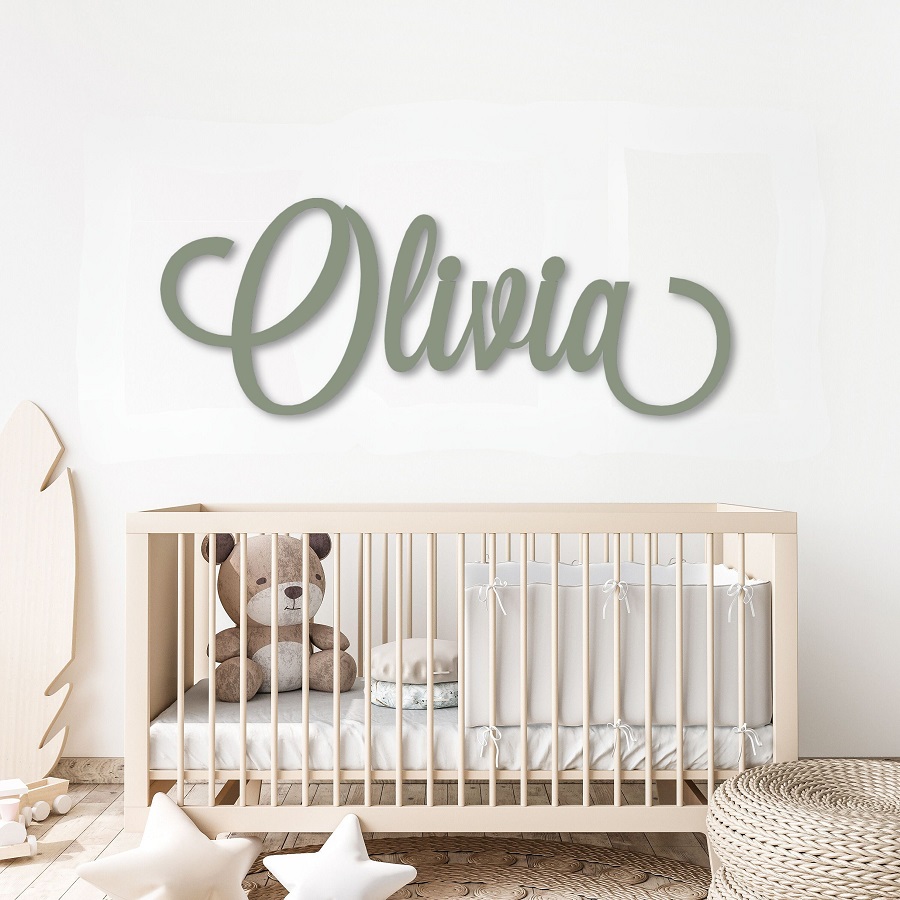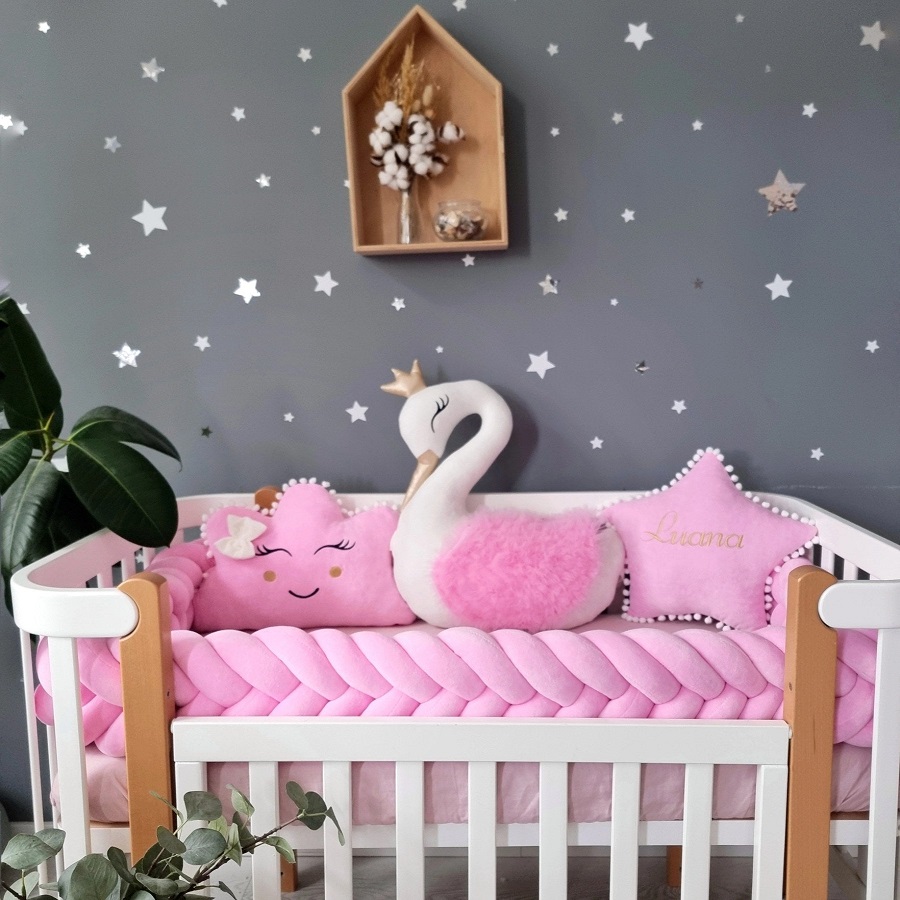Overview of Baby Sleeping Options
Selecting the correct sleeping option for your baby is crucial for their safety and comfort.
Crib: A Compact Choice
A crib is a small bed for infants, secured with high, slatted sides. It’s ideal for small nurseries and is used from birth until the child reaches two years or can climb out. Its adjustability for mattress height makes it a safe option as babies grow.
Cot: Spacious and Securing
Larger than a crib, a cot accommodates babies and toddlers up to five years old. It typically has solid, higher sides without slats all around, offering space and security for an active child. Adjustable mattress heights in cots are standard, ensuring they adapt as your little one develops.
Cot Bed: A Growing Investment
Cot beds provide long-term value by converting from a cot to a toddler bed. This adaptable furniture piece includes removable sides for transitioning as your child needs more independence. Cot beds make an ideal choice for those looking for a piece that grows with their child, from infancy into early childhood.

Key Features of a Crib
Safety and Design Considerations
When selecting a baby bed, safety tops the list of priorities. Cribs are designed with high slatted sides to prevent babies from falling out and to offer good airflow. The gaps between slats are narrow to stop little limbs from getting stuck. Cribs are often made of durable materials like wood or metal and feature stationary sides without drop-down mechanisms that could pose risks.
Mattress height in cribs is adjustable, dropping lower as your baby grows, adding an extra layer of protection. With stability and firmness in mind, cribs meet stringent safety standards, ensuring peace of mind for parents.
Ideal Age and Size for Use
The crib’s compact size fits snugly in smaller rooms, making the most of limited space. It’s the baby bed name often given to the first bed for newborns. Ideally, cribs are for infants from birth up to roughly two years old, or until the child can climb out.
With dimensions tailored for little ones, cribs offer enough room to sleep and stretch while still feeling cozy and secure. Their size makes them a practical choice, especially for the first few months when babies need constant care and quick access at night.
Understanding Cots
When it comes to choosing a baby bed, cots stand out from cribs in several ways. They are larger, often with solid sides, providing more room for your growing child. Unlike the fully slatted crib, cots may have partial slat designs or even solid ends. This can give a more enclosed feel while still maintaining safety standards. Additionally, while both have adjustable mattress heights, cots offer a more spacious sleeping area suited for active toddlers.
Differences from Cribs
Cots differ from cribs in size, design, and durability. They are built for children who have outgrown the crib but are not yet ready for a full-size bed. The sides of a cot are typically higher than those of a crib and might not include slats all around. This creates a secure environment that contains an active baby or toddler. The structure of a cot is robust, with the ability to hold a larger and heavier child comfortably. Knowing these differences helps parents decide which baby bed name suits their needs.
Suitable Ages for Cots
Cots cater to babies and toddlers beyond the infant stage. Usually, parents transition their child to a cot when they outgrow a crib, around two years old. A cot can serve well until the child turns about four or five years old. This age range makes cots a practical option for parents who wish for a bed that accommodates their child through various stages of growth. Choosing between a crib, cot, and cot bed depends on factors like room size, budget, and the desire for longevity in a piece of furniture.

The Versatility of Cot Beds
Cot beds are known for their versatility. As your child grows, these beds adapt. Starting as a cot with secure, removable sides, they transform into toddler beds.
Transitioning from Cot to Toddler Bed
When your child grows, a cot bed makes the switch simple. Remove the sides and adjust the base. Now, you have a toddler bed. This change keeps your child comfortable. It also makes bed access easier for them.
Long-term Benefits
Choosing a cot bed offers long-term advantages. You’ll save money since it’s a two-in-one baby bed name. No need to buy new beds at each growth stage. This bed grows with your child, from baby to early childhood. Cot beds also save space by replacing two separate pieces of furniture.
Factors to Consider When Choosing
When selecting the right baby bed name for your child, several factors come into play. It’s important to consider how each option fits into your overall parenting needs.
Space Availability
Before choosing between a crib, cot, or cot bed, measure your nursery. Cribs are compact, suit smaller spaces well, and work great in tight corners. Cots require more room but provide ample space for active toddlers. Cot beds are versatile but need enough room for conversion from a cot to a toddler bed. If space is limited, a multi-functional cot bed can be a smart choice.
Longevity and Cost
Considering how long each bed will be useful can determine its value. Cribs are essential for newborns but are outgrown by age two. Cots serve longer, typically up to age five. A cot bed offers the longest use as it converts into a toddler bed, making it a cost-effective solution in the long run. While initial costs may be higher for cot beds, the expense can be justified by the extended period of use and the avoidance of purchasing another bed soon.
Safety Standards and Regulations
When picking a baby bed name, it’s not just about comfort. Safety is crucial. All cribs, cots, and cot beds must meet strict safety regulations. These standards ensure that every baby bed is a secure place for your child to rest.
What to Look For in Safety Certifications
Check for certifications like ASTM, JPMA, and CPSC when shopping. These mean the bed meets high safety criteria. Look for labels and stamps on the product.
The Role of Material Quality and Construction
Sturdy materials like solid wood or metal add to safety. Strong construction prevents accidents. Avoid designs with small parts or sharp edges that could harm your child.
Importance of Following the Manufacturer’s Guidelines
Always follow the assembly instructions. This ensures the bed is set up safely. Register your product for recalls to stay informed on safety updates.
Tips for Maintaining a Safe Sleep Environment
Use the right mattress size. Ensure there are no gaps where your baby could get stuck. Keep the baby bed area clutter-free. Avoid pillows or plush toys that could be a suffocation risk.

Comparison and Final Thoughts
When deciding between a crib, cot, and cot bed, several factors should inform your choice. The decision largely depends on your nursery space, child growth expectations, and budget considerations.
Cots offer a practical solution for growing children, serving up to the age of five, whereas cribs cater to newborns and toddlers up to two years old. If you’re looking for a bed that grows with your child from infancy through early childhood, the versatile cot bed is an excellent investment. It transitions from a baby cot to a toddler bed and sometimes beyond, providing great value over time.
Regarding space, cribs are suitable for smaller nurseries, cots need slightly more room, and cot beds demand sufficient space for conversion. So, measure your available space and plan accordingly.
Lastly, consider costs. While cribs and cots might appear initially more economical, a cot bed can be more cost-effective in the long run. It eliminates the need to purchase another bed as your child grows. Buying a cot bed means investing in longevity, which might justify the higher upfront cost.
Remember, whatever option you choose, safety should never be compromised. Ensure the baby bed name you opt for meets strict safety standards, so your child has a secure sleeping environment. Always follow the manufacturer’s guidelines and registration for product recalls to enhance sleep safety.
